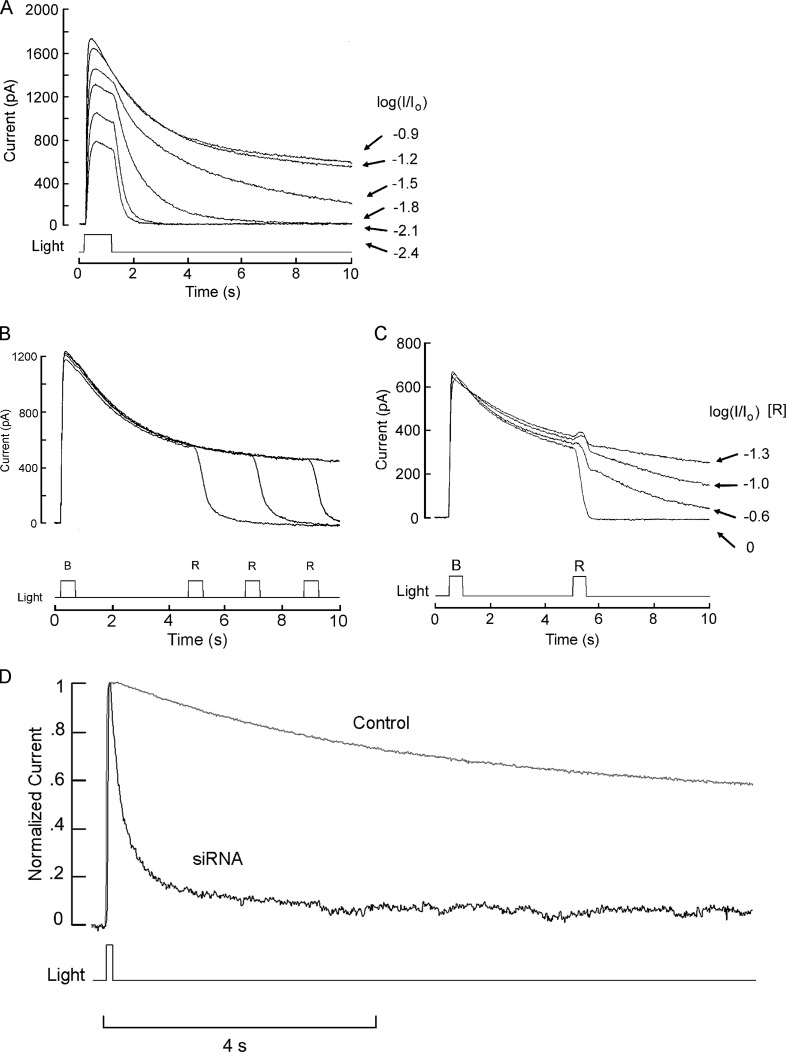Figure 5.
PAs reveal that pScop2 couples to the light-signaling cascade. (A) Progressive development of prolonged outward aftercurrents as the intensity of stimulating blue light (delivered every 2 min) is increased. Unattenuated light intensity, 5.3 × 1017 photons ⋅ s−1 ⋅ cm−2; attenuation factor, achieved by neutral-density filters, indicated at the right. The cell was voltage-clamped at −30 mV. After each trial, a 3-s period of red adaptation was applied to ensure constancy of initial distribution of photopigment state. (B) Termination of the PA by photoconversion of activated rhodopsin to the quiescent state. A bright blue flash (λ < 500 nm, 500 ms) of constant intensity (5.3 × 1017 effective photons ⋅ s−1 ⋅ cm−2) was presented every 3 min, evoking a PA with nearly identical time course. In each case, a second flash of red light (λ > 630 nm; 2.9 × 1016 photons ⋅ s−1 ⋅ cm−2) was presented after a variable delay, causing a rapid reset of the sustained photocurrent back to the baseline level. (C) Intensity dependence of the PA shutoff. A 500-ms blue light (5.3 × 1017 photons ⋅ s−1 ⋅ cm−2) was applied every 2 min, followed 4.5 s later by a 500-ms red light, the intensity of which was progressively increased, as indicated (unattenuated intensity, 2.9 × 1016 photons ⋅ s−1 ⋅ cm−2). The degree of suppression of the sustained photocurrent was monotonically related to the amount of red stimulation, as expected from the extent of the concomitant M→R conversion. (D) Treatment with pScop2 siRNA depresses the PA. A chromatic stimulus that in a control photoreceptor produces a sustained activation of the photocurrent (100 ms, 3.1 × 1017 photons ⋅ s−1 ⋅ cm−2), evokes only a transient response in a cell electroporated with siRNA (100 ms, 6 × 1017 photons ⋅ s−1 ⋅ cm−2).

